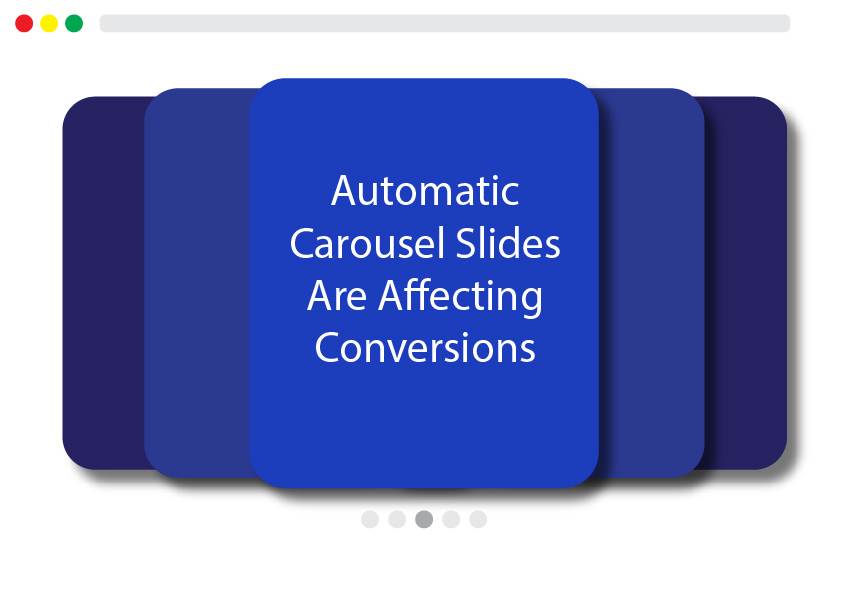
On many sites today you find an animated element on the site that rotates the display of content, images, or blog posts, This is commonly known as a “carousel”. Usually, these images rotate on a loop at various speeds. Carousels gained popularity in 2016 and were a runaway hit with web developers for several years.
From a design perspective, carousels do add an attractive element, carousels often have a negative effect on the marketing performance. Extensive web marketing research has revealed that instead of enticing user response, carousels actually detract from the marketing performance of websites.
Web marketing research shows that carousel features actually detract from the marketing performance of websites. This is well documented in hundreds of articles posted on the web. Neil Patel dubbed carousels “conversion killers” in a seminal article. If you query a search engine with “website conversion killer” on Google you’ll find many marketing experts agree.
Why are carousels conversion killers?
Carousels are most commonly found as hero elements on a homepage. The purpose of a homepage is to feature key content that can be found across the website. It’s tempting for designers to try to compact many aspects of a site’s content by animating the display of the content using a carousel.
When in fact, the animated elements of a carousel takes away the control of content visibility from the user, and places it in the control of the advertiser. As a result, when a user finds a carousel object intriguing and begins to concentrate on it, the object vanishes. This is a violation of the basic rules of engagement on web media. It is accepted in television when ads are shown, but on the web the rules are different.
A simple when you’re seeking a visual impact, change the carousel to static allowing the viewer, allowing the viewer to cycle through the additional slides by clicking on prominent navigation arrows. Making these easy adjustments will likely lower the bounce rate on your site, reduce the number of visitors who leave in annoyance.
Sliders are like the 2015 version of animated GIFs. The web has an implicit social contract with users: content will hold still. So you can consume it at your own pace, and nothing will “jump out from under you”. Video is a different matter, and it’s opt-in.






